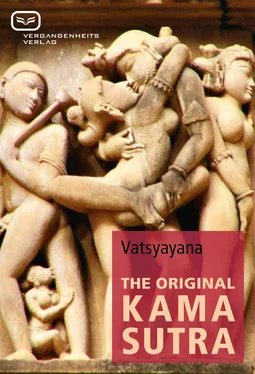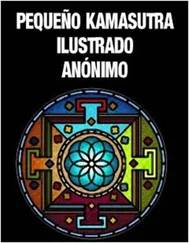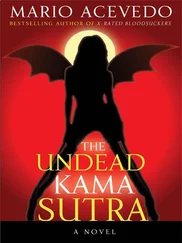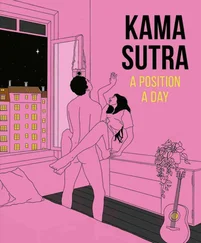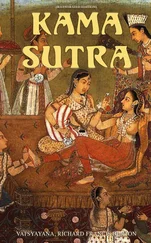It is impossible to fix the exact date either of the life of Vatsyayana or of his work. It is supposed that he must have lived between the first and the sixth centuries of the Christian era, on the following grounds:—He mentions that Satkarni Srtvahan, a king of Kuntal, killed Malayevati his wife with an instrument called kartari by striking her in the passion of love, and Vatsya quotes this case to warn people of the danger arising from some old customs of striking women when under the influence of this passion. Now this king of Kuntal is believed to have lived and reigned during the first century A.C., and consequently Vatsya must have lived after him. On the other hand, Virahamihira, in the eighteenth chapter of his ‘Brihatsanhita,’ treats of the science of love, and appears to have borrowed largely from Vatsyayana on the subject. Now Virahamihira is said to have lived during the sixth century A.D., and as Vatsya must have written his works previously, therefore not earlier than the first century A.C., and not later than the sixth century A.D., must be considered as the approximate date of his existence.
On the text of the ‘Aphorisms on Love,’ by Vatsyayana, only two commentaries have been found. One called ‘Jayamangla’ or ‘Sutrabashya,’ and the other ‘Sutra vritti.’ The date of the ‘Jayamangla’ is fixed between the tenth and thirteenth centuries A.D., because while treating of the sixty-four arts an example is taken from the ‘Kávyaprakásha,’ which was written about the tenth century A.D. Again, the copy of the commentary procured was evidently a transcript of a manuscript which once had a place in the library of a Chaulukyan king named Vishaladeva, a fact elicited from the following sentence at the end of it: —
“Here ends the part relating to the art of love in the commentary on the ‘Vatsyayana Kama Sutra,’ a copy from the library of the king of kings, Vishaladeva, who was a powerful hero, as it were a second Arjuna, and head jewel of the Chaulukya family.”
Now it is well known that this king ruled in Guzerat from 1244 to 1262 A.D., and founded a city called Visalnagur. The date, therefore, of the commentary is taken to be not earlier than the tenth and not later than the thirteenth century. The author of it is supposed to be one Yashodhara, the name given him by his preceptor being Indrapada. He seems to have written it during the time of affliction caused by his separation from a clever and shrewd woman, at least that is what he himself says at the end of each chapter. It is presumed that he called his work after the name of his absent mistress, or the word may have some connection with the meaning of her name.
This commentary was most useful in explaining the true meaning of Vatsyayana, for the commentator appears to have had a considerable knowledge of the times of the older author, and gives in some places very minute information. This cannot be said of the other commentary, called ‘Sutra vritti,’ which was written about A.D. 1789, by Narsing Shastri, a pupil of a Sarveshwar Shastri; the latter was a descendant of Bhaskur, and so also was our author, for at the conclusion of every part he calls himself Bhaskur Narsing Shastri. He was induced to write the work by order of the learned Raja Vrijalala, while he was residing in Benares, but as to the merits of this commentary it does not deserve much commendation. In many cases the writer does not appear to have understood the meaning of the original author, and has changed the text in many places to fit in with his own explanations.
A complete translation of the original work now follows. It has been prepared in complete accordance with the text of the manuscript, and is given, without further comments, as made from it.
PART I.
THE VATSYAYANA SUTRA.
INTRODUCTORY PREFACE.
SALUTATION TO DHARMA, ARTHA AND KAMA.
In the beginning, the Lord of Beings created men and women, and in the form of commandments in one hundred thousand chapters laid down rules for regulating their existence with regard to Dharma, Artha, and Kama. Some of these commandments, namely those which treated of Dharma, were separately written by Swayambhu Manu; those that related to Artha were compiled by Brihaspati; and those that referred to Kama were expounded by Nandi, the follower of Mahadeva, in one thousand chapters.
Now these ‘Kama Sutra’ (Aphorisms on Love), written by Nandi in one thousand chapters, were reproduced by Shvetaketu, the son of Uddvalaka, in an abbreviated form in five hundred chapters, and this work was again similarly reproduced in an abridged form, in one hundred and fifty chapters, by Babhravya, an inhabitant of the Punchala (South of Delhi) country. These one hundred and fifty chapters were then put together under seven heads or parts named severally —
1 Sadharana (general topics).
2 Samprayogika (embraces, etc.).
3 Kanya Samprayuktaka (union of males and females).
4 Bharyadhikarika (on one’s own wife).
5 Paradika (on the wives of other people).
6 Vaisika (on courtesans).
7 Aupamishadika (on the arts of seduction, tonic medicines, etc.).
The sixth part of this last work was separately expounded by Dattaka at the request of the public women of Pataliputra (Patna), and in the same way Charayana explained the first part of it. The remaining parts, viz., the second, third, fourth, fifth, and seventh were each separately expounded by —
Suvarnanabha (second part).
Ghotakamukha (third part).
Gonardiya (fourth part).
Gonikaputra (fifth part).
Kuchumara (seventh part), respectively.
Thus the work being written in parts by different authors was almost unobtainable, and as the parts which were expounded by Dattaka and the others treated only of the particular branches of the subject to which each part related, and moreover as the original work of Babhravya was difficult to be mastered on account of its length, Vatsyayana, therefore, composed his work in a small volume as an abstract of the whole of the works of the above-named authors.
CHAPTER II.
ON THE ACQUISITION OF DHARMA, ARTHA AND KAMA.
Man, the period of whose life is one hundred years, should practise Dharma, Artha, and Kama at different times and in such a manner that they may harmonize together and not clash in any way. He should acquire learning in his childhood, in his youth and middle age he should attend to Artha and Kama, and in his old age he should perform Dharma, and thus seek to gain Moksha, i.e., release from further transmigration. Or, on account of the uncertainty of life, he may practise them at times when they are enjoined to be practised. But one thing is to be noted, he should lead the life of a religious student until he finishes his education.
Dharma is obedience to the command of the Shastra or Holy Writ of the Hindoos to do certain things, such as the performance of sacrifices, which are not generally done because they do not belong to this world, and produce no visible effect; and not to do other things, such as eating meat, which is often done because it belongs to this world, and has visible effects.
Dharma should be learnt from the Shruti (Holy Writ), and from those conversant with it.
Artha is the acquisition of arts, land, gold, cattle, wealth, equipages and friends. It is, further, the protection of what is acquired, and the increase of what is protected.
Artha should be learnt from the king’s officers, and from merchants who may be versed in the ways of commerce.
Kama is the enjoyment of appropriate objects by the five senses of hearing, feeling, seeing, tasting and smelling, assisted by the mind together with the soul. The ingredient in this is a peculiar contact between the organ of sense and its object, and the consciousness of pleasure which arises from that contact is called Kama.
Читать дальше
